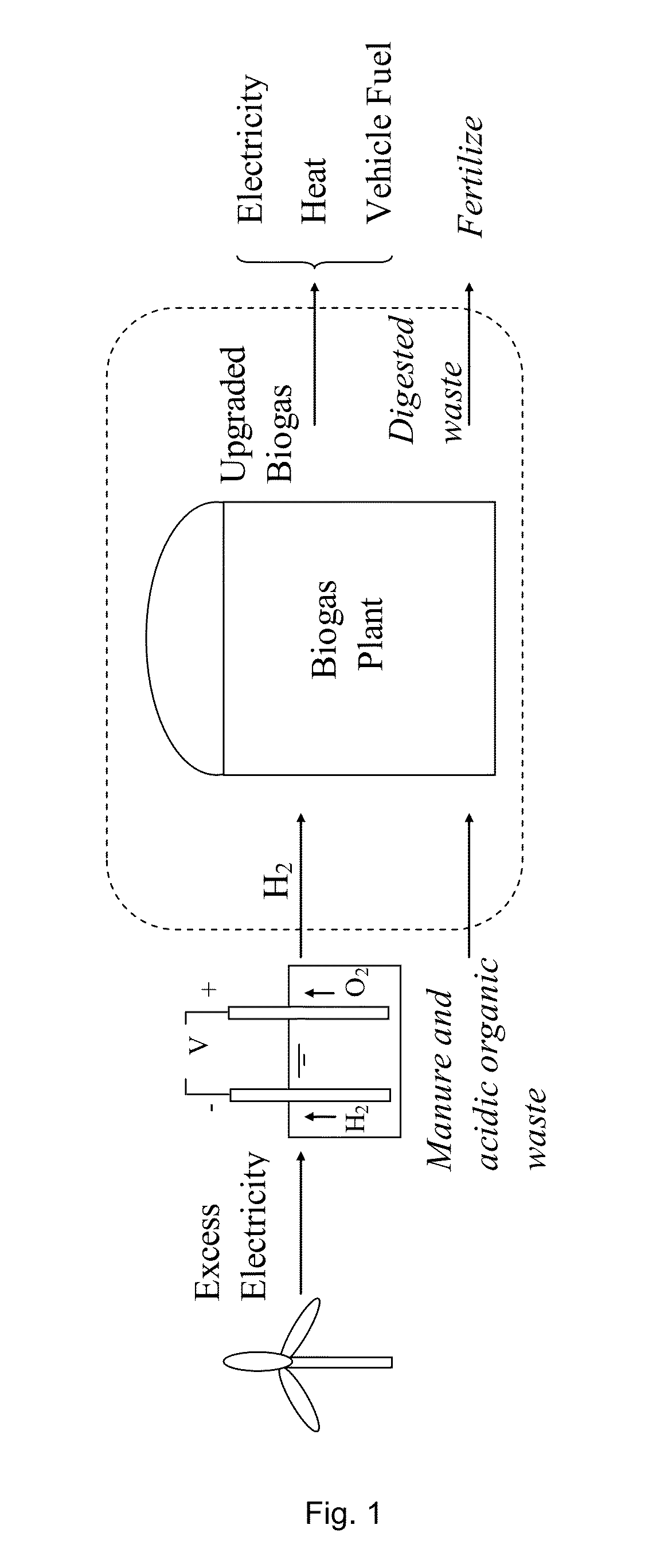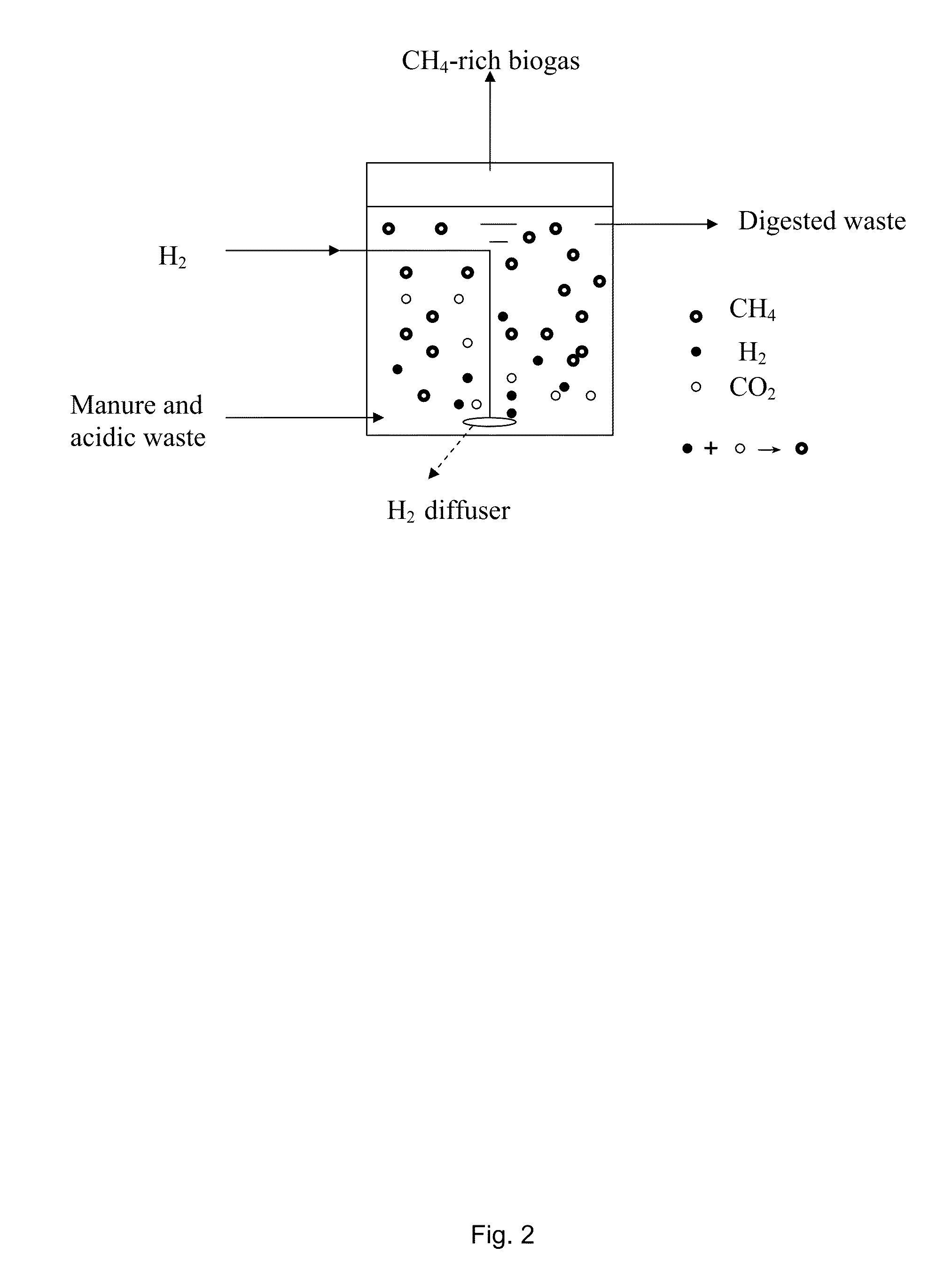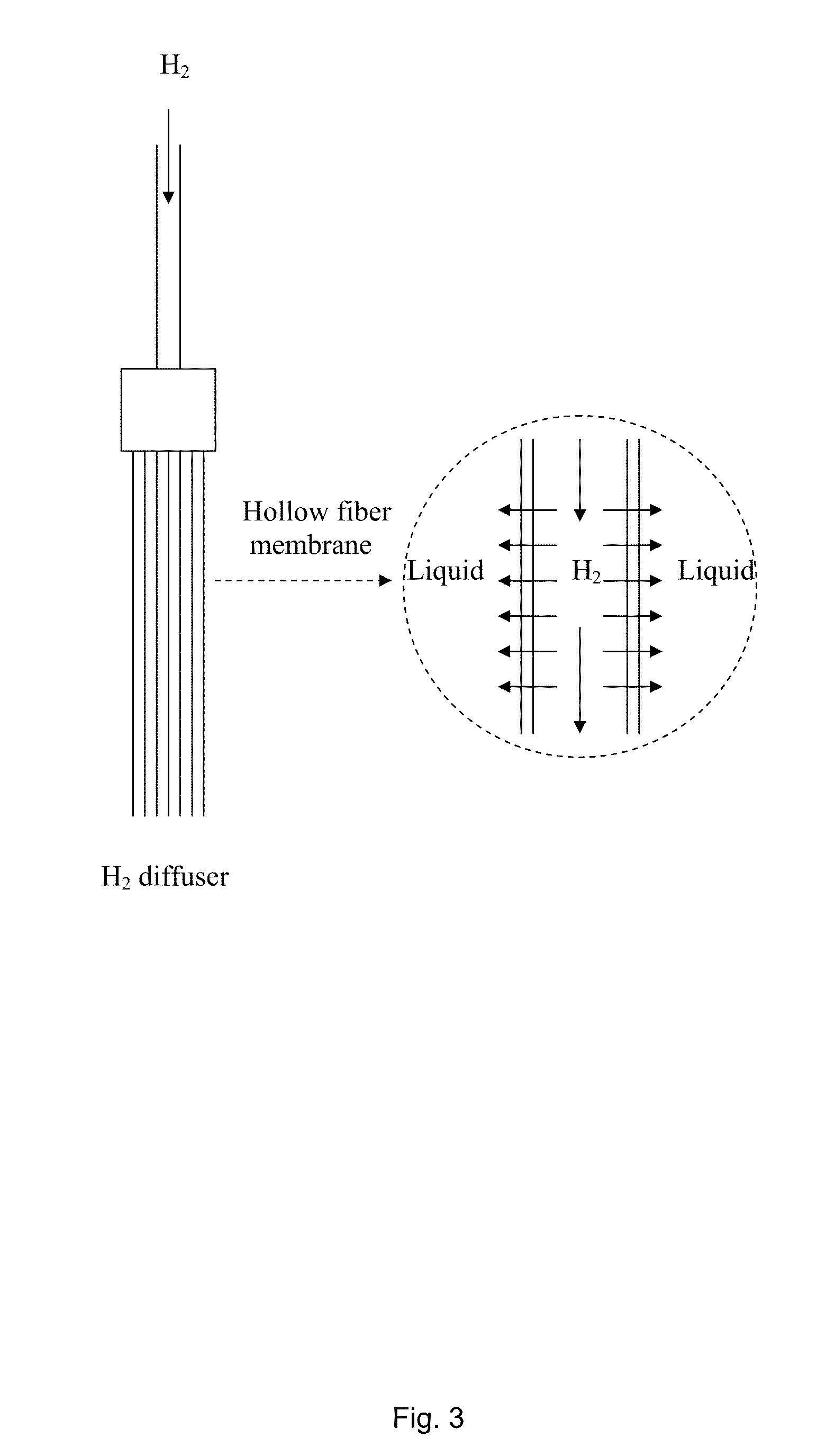Methods and Apparatus for Hydrogen Based Biogas Upgrading
a hydrogen-based biogas and hydrogen-based technology, applied in the field of biogas upgrading, to achieve the effect of increasing the ph of the culture medium, sustained and high-performing processes
- Summary
- Abstract
- Description
- Claims
- Application Information
AI Technical Summary
Benefits of technology
Problems solved by technology
Method used
Image
Examples
example 1
In Situ Upgrading
Material and Methods
Substrate Characteristics
[0330]Substrates used in the experiment were cattle manure from Vegger biogas plant and whey from Vestforsyning A / S, Denmark. The substrates were received in one batch, mixed thoroughly and distributed in 5 L plastic bottles. It was kept at −20° C. for the whole period of experiment. The frozen substrates were thawed and kept at 4° C. for 2-3 days before use. Substrate characteristics were analyzed as illustrated in Table 2. Considering the high organic concentration of whey, it was diluted four times and then mixed with manure at a ratio 2:3.
TABLE 2Substrate characteristicsCattleParametersmanureWheyMixturepH 7.15 ± 0.11 4.33 ± 0.13 6.85 ± 0.10TS (g / L) 30 ± 1.1 105 ± 2.128.5 ± 1.1VS (g / L)24.1 ± 1.2 98 ± 2.8 25 ± 1.4COD (g / L)40.4 ± 2.3 150 ± 5.7 40 ± 2.3TKN (mg / L)1092 ± 210460 ± 78701 ± 68NH4+—N540 ± 56 89 ± 25330 ± 59(mg / L)
Reactor Setup and Operations
[0331]Two identical 1 L continuously stirred tank reactors (CSTR) (A...
example 2
Ex Situ Upgrading
Material and Methods
[0338]As sources of inoculum, mesophilic anaerobically digested sewage sludge (Wastewater treatment plant, Lundtofte, Denmark) and thermophilic anaerobically digested manure (Biogas plant, Snertinge, Denmark) were used.
Reactor Setup and Operation
[0339]The first experiment was conducted to compare the biogas upgrading potentials by mesophilic and thermophilic enriched mixed cultures. Initially, mixtures (380 mL) of mesophilic or thermophilic sludge and basal anaerobic (BA) medium [Angelidaki et al. (2004) Rev Environ Sci Biotech 3: 117-129] with VSS concentration 5 g / L were added in 1140 mL serum bottles. The BA medium contained 10 mM PBS buffer. The bottles were then closed with butyl-rubber stoppers and aluminum crimps and flushed with pure H2. After that, pure CO2 (190 mL) were injected into the bottles to achieve the ratio of H2 / CO2 4:1. The bottles were incubated in shakers at 37° C. (bottles inoculated with mesophilic sludge) and 55° C. (bot...
example 3
Bioreactor Comprising Hollow Fibre Membrane (HFM)
Material and Methods
Experimental Setup
[0350]Two identical 1 L continuously stirred tank reactors (CSTR) (A and B) with a working volume of 600 mL were used. Before the HFM was installed to reactor A, both reactors were fed with a mixture of cattle manure and whey (TS 28.5 g / L, VS 25 g / L, pH 6.85, detailed information is shown in Table 5) under thermophilic condition (55° C.) with 15 d hydraulic retention time (HRT). The purpose of using co-substrate is to maintain a suitable pH for anaerobic digestion. The reactors were mixed by magnetic stirrer at a stirring speed of 150 rpm and fed once per day. Similar performance was observed in the two reactors after around 1.5 months, and then a HFM module was installed in reactor A. The HFM module contained a bundle of 400 hollow fibre membranes (model MHF 200TL, Mitsubishi Rayon). For the HFM, nonporous thin polyurethane membrane is sandwiched between two porous polyethylene layers. The outsid...
PUM
| Property | Measurement | Unit |
|---|---|---|
| pH | aaaaa | aaaaa |
| temperature | aaaaa | aaaaa |
| temperature | aaaaa | aaaaa |
Abstract
Description
Claims
Application Information
 Login to View More
Login to View More - R&D
- Intellectual Property
- Life Sciences
- Materials
- Tech Scout
- Unparalleled Data Quality
- Higher Quality Content
- 60% Fewer Hallucinations
Browse by: Latest US Patents, China's latest patents, Technical Efficacy Thesaurus, Application Domain, Technology Topic, Popular Technical Reports.
© 2025 PatSnap. All rights reserved.Legal|Privacy policy|Modern Slavery Act Transparency Statement|Sitemap|About US| Contact US: help@patsnap.com



